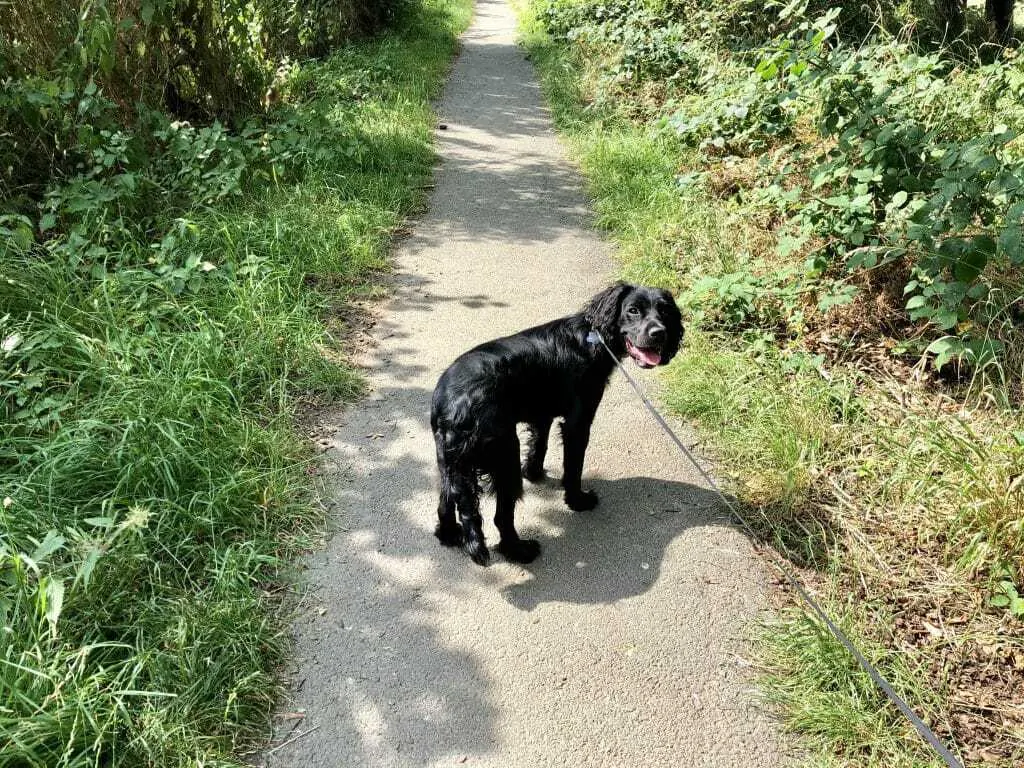A microchip is an electronic way to identify a pet. It is the size of a grain of rice and is inserted underneath the skin, usually between your pup’s shoulder blades. It contains a code that connects your dog to your personal details.
If your dog is ever found and taken to a vet or animal charity, they can use a scanner to check whether your dog has a microchip. If found, they can easily trace your details to make sure your doggy gets back to you safe and sound.
It is not currently a legal requirement to microchip your dog in all countries, so I want to share with you all the reasons why you should get your pup coded. Afterall, you want the best chance to be reunited with him if something does go wrong, right?
Contents
1. Identification
Obviously the microchip acts as identification for your dog. This is so important if you want to make sure that they can be easily found and brought back to you.
To ensure that it is accurate, you must make sure that you keep the details of the keeper up to date. If you do not and your dog gets lost, it will not be so easy for others to get him back to you. You should notify the microchip database when you move home and when there’s a new keeper.
Although the microchip does act as an incredible form of identification, it’s important to note that it does not use GPS and can therefore not track the location of your dog.
According to the AVMA, it is currently voluntary to microchip your pet in the US. However, it is a legal requirement in the UK. It costs very little for a lifetime of identification for your dog, so whether it is legal in your home country or not, it is worth it.
2. They can be reunited with you even if their collar and tag are missing
There are a number of reasons why your dog may not be wearing his collar and tag.
These include:
- Your dog’s collar has become worn and therefore has fallen off or broken
- Your dog could get it caught in something, causing it to break
- You’ve recently washed your dog and have yet to put his collar back on
- Someone else removed it
These may seem obvious but try to consider that dogs can be stolen. If a pup is stolen, it is unlikely that the abductor would want to keep your dog’s collar on. However, the abductor would not be able to change the details on your dog’s microchip. If someone else were to find your dog in this situation, he could be brought back to you.
Dogs can become lost. Whether this is a simple accident of leaving a door open or your dog bolting off in the park, it is still scary when you cannot find your pooch anywhere. A microchip can give you some hope that, if found, he can come home to you soon.
Nelly, my family Cockapoo, was inserted with a microchip at an early age to ensure that our details were directly linked with her. This way we always know that if she is lost and found without her collar and tag, there’s a good chance she might be returned to us despite who is looking after her.
Remember that even if your dog has been microchipped, you still must ensure that your dog is wearing a collar and tag.
Oz the Cocker Spaniel stays on his leash at the moment but I would still be terrified to lose him.
3. Microchips avoid your dog being rehomed
Although we often think of rescue dogs as those who have been abandoned and not been given a good life, this is not always the case.
If your dog gets lost and nobody can find a way to reroute him to you, your dog has to go somewhere. According to Blue Cross, after 7 days your dog can be passed onto a rehoming charity. Without identification, your dog risks being rehomed to another family.
Obviously it would be heart-breaking for you to lose your pup all because they could not be identified. Make sure you get them microchipped so that they do not end up with the wrong family.
From the point of view of a dog borrower, I feel more at ease if I know their dog has been microchipped. The thought of losing your own dog by mistake is terrorising, but the thought of losing another person’s pooch by accident would be a massive weight to hold.
Although I am a responsible dog borrower, I cannot deny that sometimes things can go wrong. A microchip provides security for both the owners of a pooch and anyone else who looks after him.
4. The procedure will not take long
If you are particularly worried that having a microchip inserted under your dogs skin will cause them too much pain, try not to worry too much!
The microchip is a fairly quick procedure, completed with a needle. Your dog will not need to be pinned down or forced. In fact, no anesthetic is required according to Dogs Trust and some dogs do not even realise that the process has been done. Remember that those who are qualified to insert a microchip may have a different way of completing the procedure.
If you ask me, a procedure that only takes a few minutes is worth it for the length of time that it lasts. The microchip can be effective for over 20 years, which is a great reward for such a small amount of pain.
As with anything, there can be drawbacks. There’s a slight chance that the microchip can become lost, which means that they can be difficult to locate when scanned.
5. The microchip could save your dog’s life
If your dog is on medication that they need to stay a happy pooch on a day-to-day basis, wouldn’t you rather live in the comfort that they will be able to be treated each day?
If your dog goes missing and he does not have a microchip, it can be much harder for your pooch to be brought back to you. If he has a long medical history and needs consistent care and medication, someone else who finds him will not necessarily know what he needs and why.
The sooner your pooch is found and is reunited with you, the sooner he can be on his way to recover from any trauma or missed medication.
The AVMA has also stated that some registration databases allow you to store medical information that can be checked by a vet. This is only for reference though and not all databases allow you to do this.
A microchip could save your dog’s life. So why take the risk?
Teddy the Miniature Labradoodle brings so much happiness to everyone he meets.
Losing your dog can be a traumatic experience. I cannot imagine how I would feel if either my own family dog or any of the dogs I borrow got lost and I could not do much about it. A dog completely changes your life and they become part of the family, so it makes sense to make sure that they are as safe as possible.
Dogs live for many years, so your life is likely to feel completely different if you are unable to have them in your life anymore.
Those who are kind-hearted will ensure that your dog is returned to you, so make sure that you make the whole process easier for them by microchipping your pooch.
You can watch a little pooch get microchipped and learn how they can be scanned.
So, let’s just summarise why you should microchip your beloved dog:
- They will not be rehomed if they can identify you from your dog’s microchip
- The process is quick and simple
- They can be identified even if your dog loses his collar and tag


